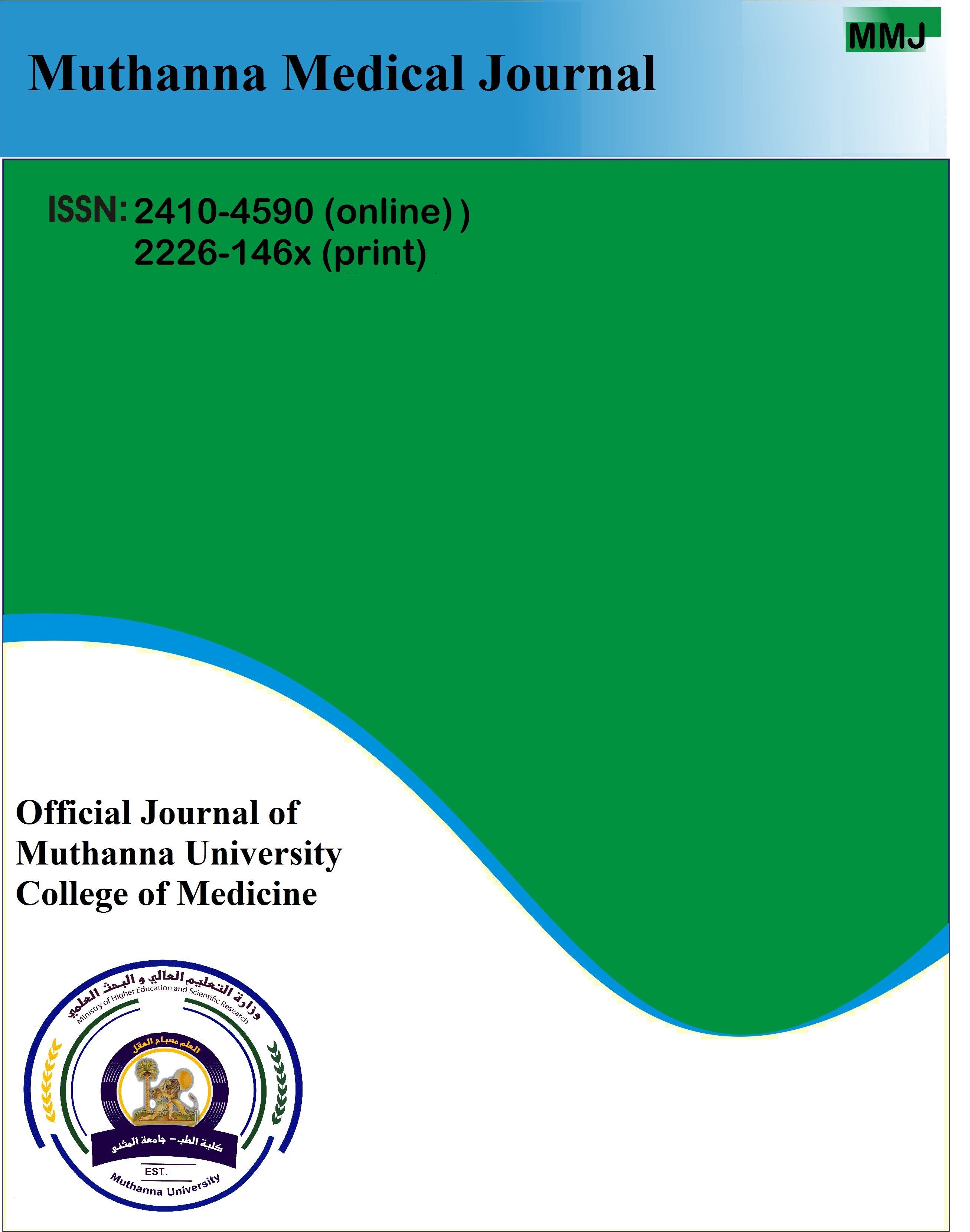Muthanna Medical Journal
Volume 9, Issue 2, 2022 Page 176-184
http://dx.doi.org/10.52113/1/1/2022-176-184
AfraaGassim Mohammed Yousif ¹, Khalid Abdelbagi Ataelfadeal ², Abuagla M. Dafalla ³, Amira S. Khalafalla ³, Shereen Faisal ¹, AbdElarim A. Abdorabo¹, Suhair Abdelrahman Ahmed ¹, Rimaz Gurashi 1, GadAllah Modawe 4**
Correspondence author: abdrabokarim@gmail.com
¹Alneelain University, Faculty of Medical Laboratory Sciences, Clinical Chemistry Department, Khartoum, Sudan.
² Omdurman Islamic University, Faculty of Medicine and Health Sciences, Internal Medicine Department, Omdurman, Sudan.
³ University of Gezira, Faculty of Medical Laboratory Sciences, Clinical Chemistry Department, WadMedani, Sudan.
Omdurman Islamic University, Faculty of Medicine and Health Sciences, Biochemistry Department, Omdurman,
Sudan.
² Omdurman Islamic University, Faculty of Medicine and Health Sciences, Internal Medicine Department, Omdurman, Sudan.
³ University of Gezira, Faculty of Medical Laboratory Sciences, Clinical Chemistry Department, WadMedani, Sudan.
Omdurman Islamic University, Faculty of Medicine and Health Sciences, Biochemistry Department, Omdurman,
Sudan.
Received 11 September , Accepted 28 November 2022, Available online 15 December 2022.
Copyright © 2022 AA. This is article distributed under the terms of the Creative Commons Attribution License http://creativecommons.org/licenses/by/4.0), which permits unrestricted use, distribution, and reproduction in any medium, provided the original work is properly cited
Copyright © 2022 AA. This is article distributed under the terms of the Creative Commons Attribution License http://creativecommons.org/licenses/by/4.0), which permits unrestricted use, distribution, and reproduction in any medium, provided the original work is properly cited
Abstract
Hyperthyroidism is a term for overactive tissue within the thyroid gland, human hyperthyroidism is accompanied by multiple abnormalities with increased energy expenditure and excessive mobilization and utilization of metabolic substrates. The aim of this study is to investigate the concentration of serum lipid profiles in Sudanese patient with hyperthyroidism in Khartoum state. Analytical case control hospital base study recruited 50 patients diagnosed with hyperthyroidism compare with 50 control group, attended at Military Hospital, Khartoum state from January to April 2021. The results data show that the ages of hyperthyroidism were ranging (20-72 years). TSH and T3 were significantly increased in hyperthyroidism patients compared with control group. T4 on the other hand show no significant difference between hyperthyroidism patients (p=0.353) and control group. Total Cholesterol show significant increase in hyperthyroid patients when compared to control group, while the remaining Lipid profile (triglycerides (T.G), LDL-c HDL-c and VLDL) show no significant increase in hyperthyroidism patients compared to control group, T.G (p= .107), HDL-c (p= .189), and LDL-c (P=.113 ), VLDL-c (P=.506 ).The study show significant positive correlation between the levels of TSH and VLDL (r=0.396, P= 0.004). Positive correlation between the levels of T3 and total cholesterol (r=0.406, P= 0.003), positive correlation between the levels of T3 and LDL-c (r=0.296, P= 0.037). In conclusions, the hyperthyroidism causes significant increases of serum total Cholesterol, and other lipid profile remains normal.
Keywords: Hyperthyroidism, Lipid profile, Total cholesterol, Sudanese, TSH, VLDL, LDL